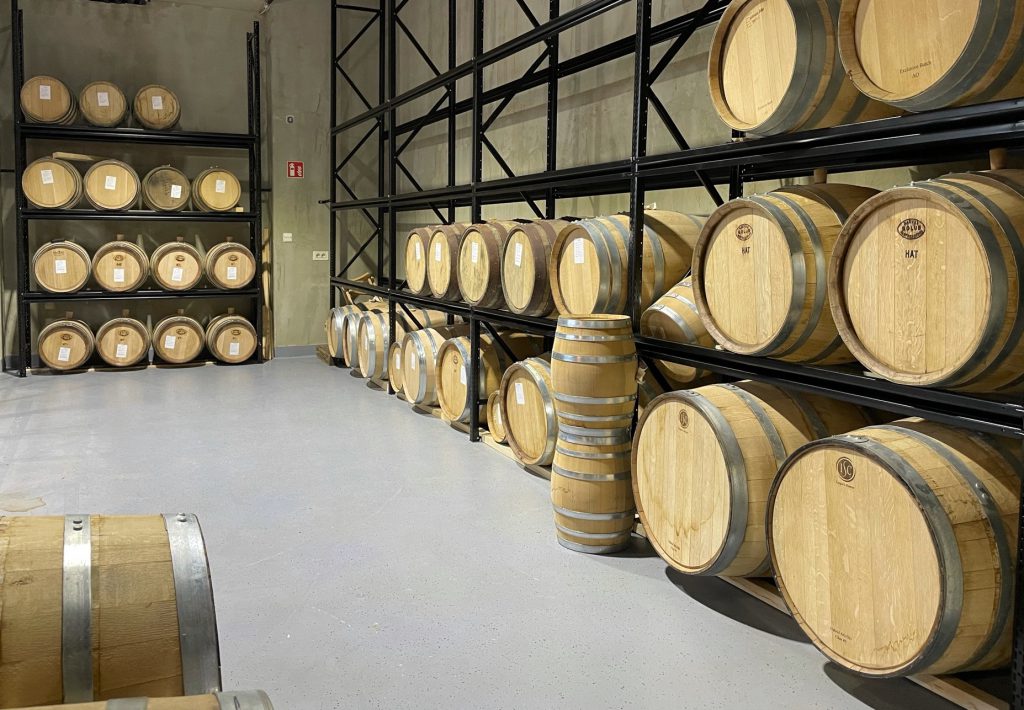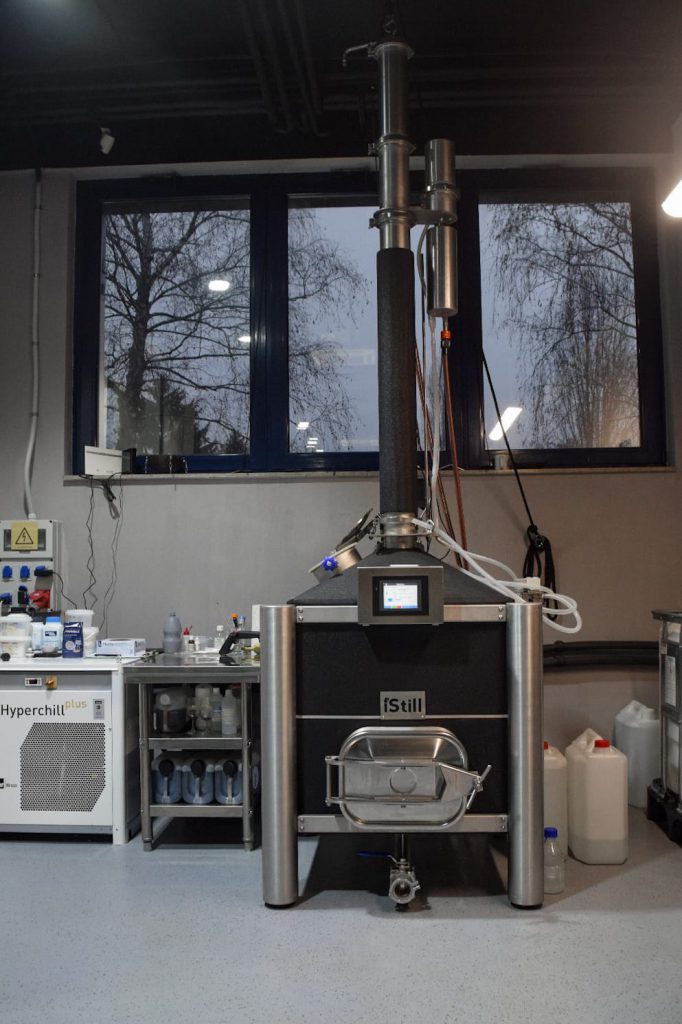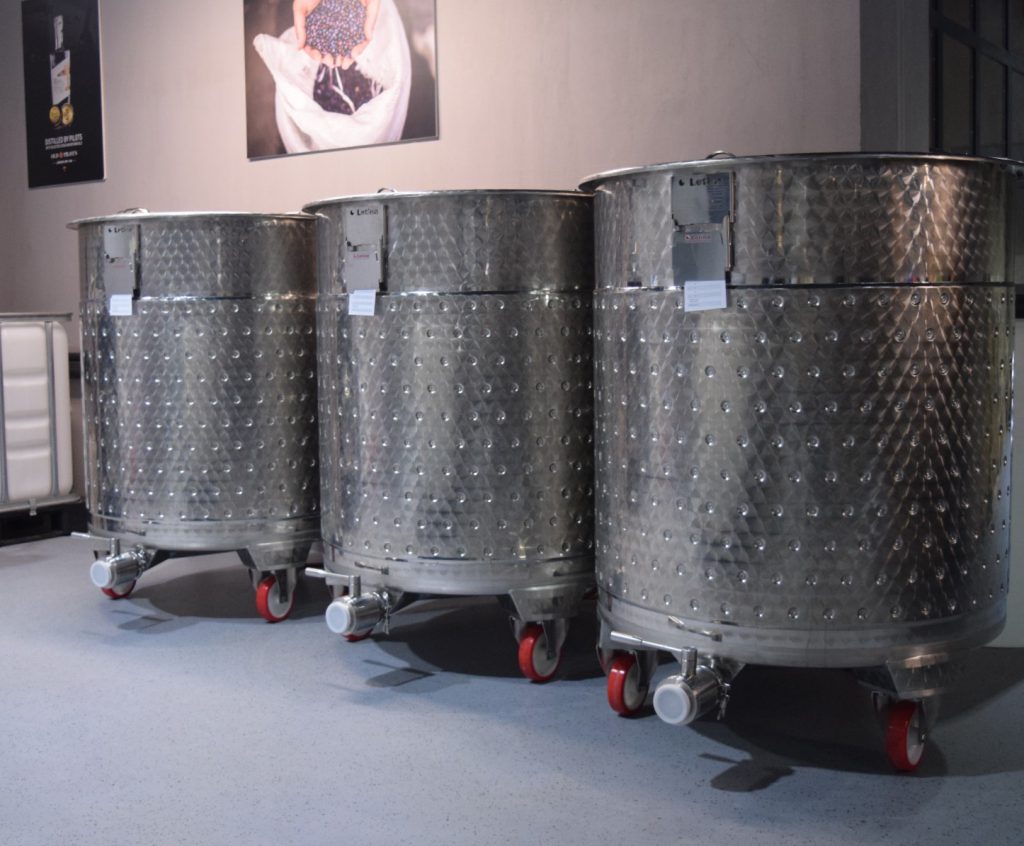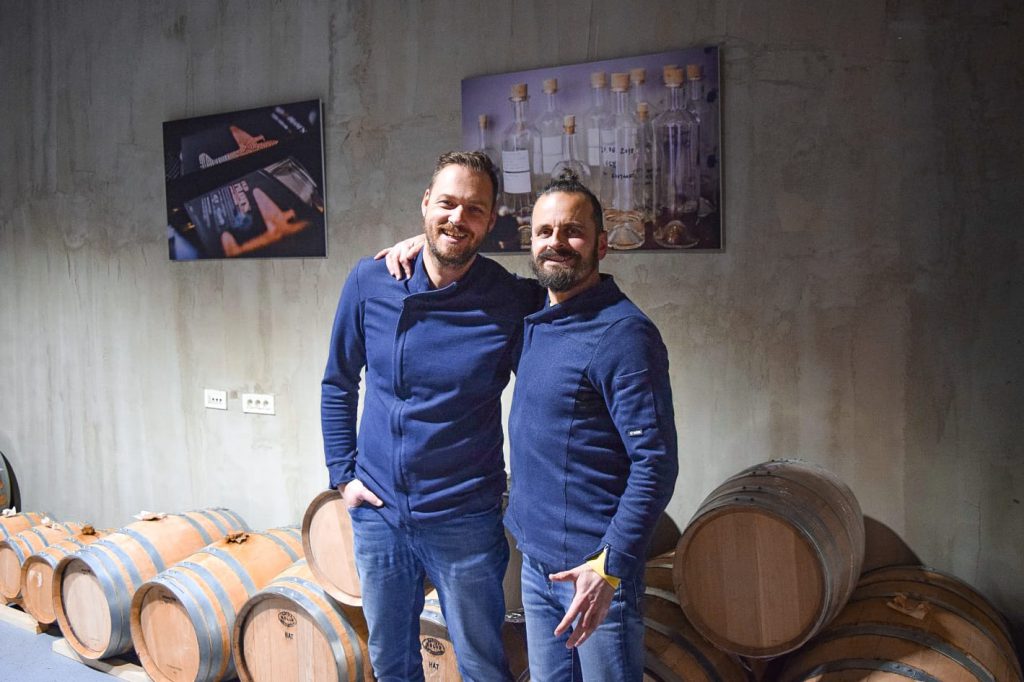INTERVIEWS
The Spirit in the Bottle (Old Pilot's) Distillery making whisky
PROLOGUE
Like I mentioned in the previous article, the world of whisky production has been moving up steadily and a dozen new distilleries are erupting in Scotland alone. Unfortunately, there is no possible way to know how many of them are in the entire world but I’m sure it’s a lot. As I said, running a distillery is expensive. It’s not easy to pay a salary or cover the numerous fees when your money is sitting in a cask, slowly maturing, waiting for the right time and that time is at the earliest a few years later. Naturally, gin production is always a great way to help alleviate those expenses and put your brand on the market. Currently one of the most famous gin brands in Croatia is Old Pilot’s and they’ve recently started distilling whisky.
INTRODUCTION
The Spirit in the Bottle Distillery or more popularly known as the Old Pilot’s Distillery (due to the success of their gin) is a collaboration between two friends; Hrvoje Bušić and Tomislav Anadolac. They met at the aviation academy a long time ago and it’s still Hrvoje’s profession hence the name – Old Pilot’s. The distillery was founded in 2018 and they’ve specialised in the production of gin and later on whisky. Their gin won plenty of awards, including the IWSC Trophy for the best London dry Gin and gold in the San Francisco World Spirits Competition. They’ve recently changed location and they’ve acquired bigger stills. So far, everything they’ve done has been critically and consumeristically acclaimed.

WHISKY PRODUCTION
Given that whisky production is not an easy task, let alone profitable for the first few years, how did you decide to do this?
Old Pilot’s: We started distilling because we collected different drinks from all over the world. After a few years, we decided to engage in production. Our first loves were bourbons and single malts, so the first distillate we wanted to make was whisky. There was a general idea or a plan, but it was very difficult to open a company/distillery. You need to invest a large amount of money, and you don’t know what will happen in the next couple of years and whether the product will sell and meet all the required criteria.
Therefore, we decided to focus on our second love and that is gin, of which the production technology is much simpler. We also wanted to see how we function as a team and whether it can be a successful business in Croatia. After 3 years, we realized that we can function and be successful and we have the opportunity to make whisky from the reserve of our company’s business. We decided to finally return to our first love, the production of whisky and bourbon. We were not interested in the production of brandy, rum, tequila or vodka for example, because we simply do not enjoy these drinks as much as we enjoy whisky or gin. We’re not going to do anything we think we can’t do well or that we can’t enjoy. Accordingly, for the next 3 years, the time it will take for one barrel to become legally called whisky, we won’t engage in the production of new distillates so that our knowledge and technology can only be dedicated to whisky.
Looking at the current state of the market, do you have a particular audience for your product, i.e. do you want to tailor towards cocktails or would you rather have the audience consume it in some other form?
Old Pilot’s: Our production, starting from gin and through whisky is intended for a smaller circle of people, we are not a mass product. Consequently, the quantity we can produce annually is very small. I reckon that in the first year we could put on the market around 1500-2000 bottles of 0.5L, so no matter what kind of audience we target, regarding the size of the whisky market it will be a very small amount.
Due to our batch-based production method (no continuous production), we make products that are different, in which technology and a very detailed high-tech production process are involved, thus obtaining a higher quality product that will not be for the mass market. I think we will be a novelty on the market because even though Croatians drink (mostly commercial) whiskies, I expect that in the next 3-4 years Croatians will also develop this scene of higher quality whiskies and increase the number of fans of quality whiskies, which already exists but it’s still small. When our whisky is ready for consumption, people will be proud that we made the whisky here. I think the audience will be eager to try something new, something different and I hope they will abide by our motto which is: drink a little, but well.
Tell me more about the production, of course as much as you can say in public; What yeasts do you use, how long the fermentation lasts, something about distillation, what kind of stills you use, if it is allowed to know the size of the barrels and how much distillation you plan to do per year?
Old Pilot’s: As for yeasts, we use distiller’s ones. In the future, we plan to have combinations with brewer’s yeasts, and only later with some wild yeasts from forests in Croatia. The fermentation time of the first batch is between 6-7 days, however, the variables regarding lactobacilli were above the limit so we reduced this to 4-5 days. Speaking of distillation, we do that on the IStill device. Since we do gin, we have a division of labour; the distillery makes whisky for six months and then gin for six months, so we don’t have the number of distillations per year yet. For now, we do one distillation about once a month. Fermenters are open-top fermenters that are more characteristic of American and Scottish distillers. Unlike breweries we do not use hermetically sealed or anaerobic fermentation technology, we prefer them to be open because we want different types of esters and different types of flavours to a certain extent.
Are you satisfied with the new make and how many attempts did it take you to get to the position that you are satisfied with?
Old Pilot’s: When we start with a new recipe and a new batch, we do it very conservatively. E. g., the ratio of grains and water, the quantities of different grains in the mash, etc. However, when we see what the equipment we have at our disposal can withstand, what specific gravities we have obtained and how yeast behaves in terms of conversion, then we react to it. Our first three batches are very conservative and then from the 3rd to about the 12th-13th, we bring the batch to what I think it should produce.
We need about 5-6 “test” batches that are successful, but to get the maximum ratio of usability and taste, we need about 6-12 cookings. We then have the recipe we want – new make, and only after that it goes into the barrel and we check it every 3 months. How it changes and in what direction it develops.
What variations of whisky do you currently make and what are you interested in the future?
Old Pilots: We started with a single malt that is based exclusively on malted barley. We have triple malt (wheat / rye / barley) and we also have four grain (corn / wheat / barley / rye). In the future, we will make variants of four grains with peat and also combinations of triple malt with and without peat in different proportions.

BUYING A CASK
There is a popular practice of buying a cask in Scotland, have you thought about it more seriously, perhaps tried to offer it to certain speciality shops or hotels, maybe even clubs or private buyers a share or part of the cask?
Old Pilot’s: Yes, the example of Scotland where we’ve seen it done that way. There is a possibility of buying a cask with some of the whisky we currently have and which we will now put to ageing. We will offer this to some enthusiasts, to begin with, because given what has been announced and what demand has shown, it seems to me that everything we produce this year could be sold to us immediately in the form of a barrel. This is not our goal. In the end, we would like to launch something bottled for the 3rd year to offer whisky to a wider audience.
We are currently working on business models and discussing both the size of the cask and the flavours because in some barrels the distillate will need more time to mature. This is exactly our story, the barrel is in our possession, the distillate in that barrel is aged in our distillery when it matures, and we can’t know exactly how many years; we hand it over to the customer. We will also offer the opportunity to bottle it. Given the customer’s preferences, the barrel will be selected. There is also the possibility of semi-annual or quarterly inviting customers and giving education and testing. So we are actively working on that model and it is one of the first models of how we will offer whisky on the market.
How complicated are the legal issues surrounding whisky production, are there certain guidelines that you must follow in Croatia, or do you adhere to the SWA?
Old Pilot’s: We do not adhere to the SWA, nor do we want to. We are lucky that Croatian regulations are identical to the European ones. The regulations we adhere to are that the whisky product is obtained by crushing grain/malt, distilling and ageing in wooden barrels with a volume of less than 700L for a minimum of 3 years; and these are all the restrictions we have.
What kind of grain/malt will we put inside; will it be American, European oak, what char level and so on… We do not intend to copy SWA but make a combination of the best that the world of whisky has to offer. Our whisky will be made from different grains/malts, aged in oak barrels under 700L for more than 3 years and these are all the rules we follow.

INSPIRATIONS OR FAVOURITES
Are there any role models in the world of whisky production that you have looked up to or maybe some distilleries that you like?
Old Pilot’s: We have them in Japan, Europe and the US. Those would be Nikka, Yamazaki, Aberlour, Macallan, Uncle Nearest and Blood Oath.
Speaking of Japanese whiskies, their technology originated from Scottish technology. They learned something, applied it and put some stamp of their own, among other things with Japanese oak barrels.
Mentioning Scotch whisky, I pointed out Macallan because imagining a drink that I will enjoy, and which will be my “every day” is that particular whisky.
As for Blood Oath, they have a very nice policy: they’ve bought whisky and then blended it, made some combinations of their own to raise the value of the drink. This is interesting to me because we won’t have one barrel type, one recipe, one cereal, one yeast or temperature in our production, and we will in some way follow this path to make an extremely good product from several different recipes. We as a distillery do not have the tradition or a large output volume, so we have to make things work with different combinations.
As for the King’s County Distillery, they were even a smaller distillery than we were when they started. They are very basic and have simplified everything. They don’t care about water or special yeasts. They have two kinds of cereal (corn and barley) and they make different combinations with it and succeeded with their distillation technology to get a super product.
I like that these are the people who started from scratch with their enthusiasm and knowledge and managed to win prizes in important competitions. They are a role model for me because they’ve shown that one can compete with big brands.
What are your favourite whisky styles?
Old Pilot’s: We have completely different whisky preferences. While I like floral and fruity notes in my whisky, my colleague likes distinctively peaty notes, saltiness, waxiness etc. Each of us drinks what we like and it’s good that we both like different things.
Are you also a fan of this type of drink in your private life? If so, tell me what left a mark on you this year in a good and bad light.
Old Pilot’s: Of course, we taste a lot of things here in the office and while Tomislav enjoys Jack Daniel’s Gold no.27, I liked Huxley. As for the bad ones, Tomislav didn’t like Tullibardine 500 Sherry Finish and I couldn’t care less about Jim Beam’s Black extra-aged release. There were also a lot more whiskies that were great, but these bottles came to our minds first.

ENDING NOTE
I’ve tried a couple of their variations and it’s promising, it ticks all the boxes in my opinion and I can’t wait to try it after a couple of years. Not only are they one of the first whisky makers, but they are also doing different variations regarding single malts, triple malts, peat, etc. One can only be so lucky to have the opportunity to try it. This is the same as the last time, they make great gin, check out the following links:
Old Pilot’s Distillery webpage: http://www.oldpilots.com/
Old Pilot’s Distillery Facebook: https://www.facebook.com/oldpilotsgin/
Old Pilot’s Distillery Instagram: https://www.instagram.com/old_pilots_gin/
We have two ambitious whisky makers in Croatia with some rumours mentioning more, but I’ll let you know about them in due time. I admire both Brigljević x Varionica and Old Pilot’s, they are in some ways similar yet so different. Diversity and a bit of healthy rivalry is always a good thing because they both want to make the best possible product for us (the customers). Those people aren’t six generations deep in whisky distilling, they are pioneers in terms of making whisky on this level. Thank you for reading,
Drinkwater